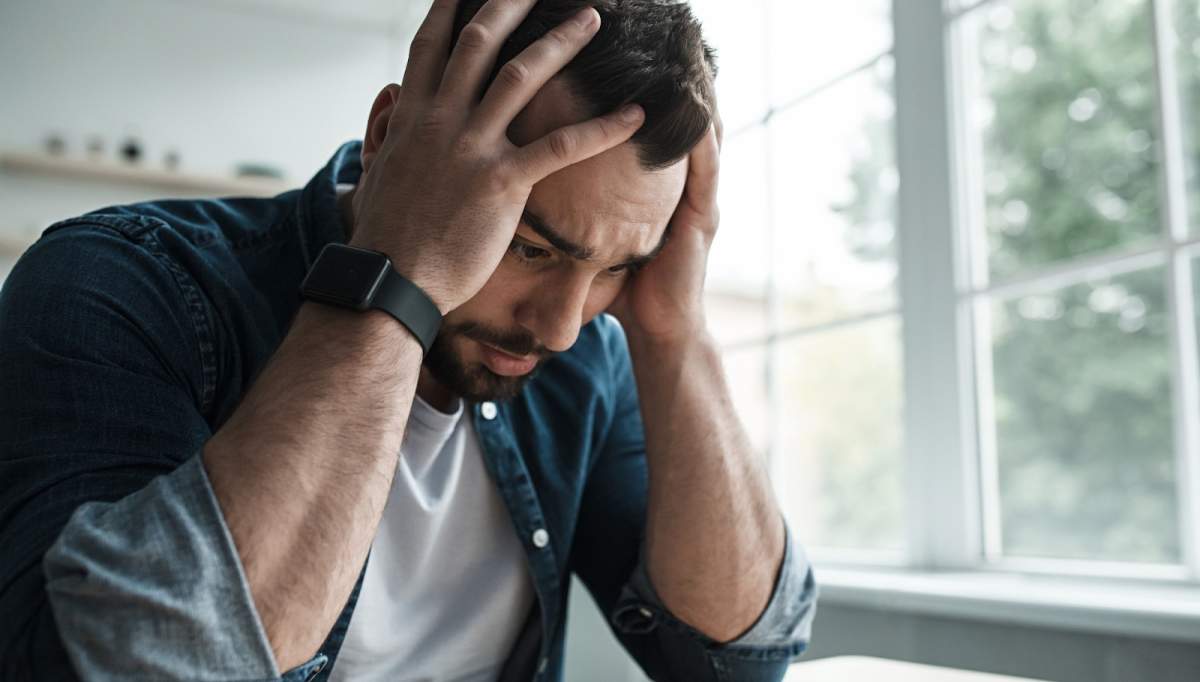Anxiety creeps in quietly. That racing heart during your morning commute. The constant worry about that work presentation next week. The sleepless nights spent staring at the ceiling. Many of us brush these feelings aside as normal stress, but they might be early signals your body and mind are sending about something deeper.
With approximately 31.1% of U.S. adults experiencing an anxiety disorder at some point in their lives, recognizing these early warning signs can make all the difference in managing anxiety before it takes over.
Cognitive Early Warning Systems of Anxiety
Beyond physical symptoms, anxiety disorder signs often manifest through changes in thinking patterns that can significantly impact daily functioning.
Even before full-blown anxiety develops, subtle shifts in thought patterns can signal that something’s amiss.
Thought Pattern Changes
- Catastrophizing – jumping to the worst possible scenario for minor problems
- Perfectionist tendencies are becoming more rigid and demanding
- Increasing difficulty tolerating uncertainty or ambiguity in situations
These thought patterns can be subtle at first but tend to intensify over time if not addressed. Getting an accurate diagnosis using the Right ICD-10 Code for Anxiety is crucial for proper treatment planning and insurance coverage.
Attention and Focus Disruptions
Anxiety doesn’t just change what you think about—it affects how well you can think at all.
- Memory blanking during routine conversations
- Indecision about small, everyday choices
- Difficulty concentrating on tasks that normally come easily
Sensory Processing Changes
Many people don’t realize that anxiety symptoms can alter how we process sensory information.
- Becoming unusually sensitive to loud noises or bright lights
- Feeling overwhelmed in crowded environments
- Experiencing moments where things feel “unreal” or detached
As cognitive symptoms develop, they typically begin to manifest in behavioral changes that others might notice even before you do.
Physical Manifestations of Anxiety Before They Intensify
The body often sounds the alarm bells of anxiety long before our conscious mind acknowledges the problem. Paying attention to these physical cues can help identify early signs of anxiety when they’re most manageable.
Before diving into specific physical manifestations, it’s important to understand that our bodies have evolved sophisticated warning systems that activate during stress.
Autonomic Nervous System Responses
Your autonomic nervous system kicks into high gear when anxiety begins to take hold. This ancient survival mechanism doesn’t distinguish between a looming deadline and a predator in the wild.
- Racing heart and palpitations that occur even during rest periods
- Shortness of breath or feeling like you can’t get a full breath
- Breaking into a cold sweat during non-physical activities
Digestive System Warning Signs
The gut-brain connection is powerful, making your digestive system remarkably responsive to anxiety disorder signs.
- Persistent “butterflies” or knots in your stomach
- Changes in appetite – either increased or decreased hunger
- Digestive issues like diarrhea, constipation, or nausea without an obvious cause
Lesser-Known Physical Indicators
Some physical manifestations of anxiety are less obvious but equally important to recognize:
- Cold hands and feet despite normal temperatures
- Unexplained skin conditions like hives or rashes
- Muscle tension, particularly in the neck, shoulders, and jaw
Now that we’ve examined how anxiety presents physically, let’s explore how it affects our thought patterns and cognitive processes.
Behavioral Red Flags for Developing Anxiety
Our actions often reflect our internal state, with subtle behavior changes serving as important symptoms of anxiety that shouldn’t be ignored.
These behavioral shifts might seem insignificant at first, but can gradually limit your life in significant ways.
Subtle avoidance patterns often emerge as early behavioral indicators of anxiety. You might find yourself making excuses to skip social gatherings you once enjoyed or delaying tasks that carry uncertain outcomes. Some people develop “safety behaviors,” such as always choosing to sit near exits or repeatedly checking things to feel in control.
Sleep disturbances also serve as critical yet frequently overlooked signs. Struggling to fall asleep despite feeling exhausted, waking up in the middle of the night with racing thoughts, or experiencing morning anxiety, where dread or worry hits the moment you open your eyes, can all point to underlying anxiety.
Social interaction changes are another telltale sign. These can include withdrawing from conversations, seeking constant reassurance, or feeling overly anxious about texts, emails, or social media. Often, these behavioral shifts go hand in hand with emotional changes, forming a clear picture of developing anxiety that deserves attention.
Emotional Undercurrents of Emerging Anxiety
The emotional landscape changes significantly as anxiety develops, with subtle shifts in feelings that serve as important recognizing anxiety symptoms.
These emotional changes often feel confusing because they may seem disconnected from any obvious cause.
Irritability and Emotional Dysregulation
- Becoming disproportionately frustrated by minor inconveniences
- Unexpected tearfulness without clear triggers
- Snapping at loved ones over small issues
Persistent Worry Patterns
- Finding it difficult to “turn off” worrying thoughts
- Worries that jump from topic to topic without resolution
- The feeling that your mind is always “on,” even during relaxation
Mood Fluctuations
- Strong connections between anxiety and depressive feelings
- Anticipatory anxiety that builds before events
- Feeling overwhelmed by tasks you previously managed with ease
Understanding these emotional patterns is crucial for anxiety awareness and early intervention.
When and How to Seek Professional Help
Recognizing when early warning signs of anxiety require professional attention is a critical step in effectively managing the condition. Understanding the threshold for seeking help can stop symptoms from progressing into something more severe. Too often, individuals wait until anxiety has already disrupted major aspects of life before reaching out, but early intervention can lead to better outcomes and faster recovery.
Severity Assessment Tools
There are practical tools available to help determine whether it’s time to consult a professional. Self-assessment questionnaires can give insight into your current anxiety levels, while tracking the frequency and intensity of symptoms over time helps identify worsening patterns.
It’s also important to assess how much these symptoms are interfering with your ability to function in everyday life.
Healthcare Navigation for Anxiety Concerns
When seeking help, it’s important to consider whether to begin with a primary care provider or go directly to a specialist for evaluation. Understanding your insurance coverage and knowing what documentation is required can reduce the friction of getting started. Telehealth options have also become widely accessible and are often a convenient entry point for both assessment and treatment.
Treatment Options Timeline
Early intervention typically involves strategies like cognitive behavioral therapy or mindfulness-based approaches, which have shown strong evidence for effectiveness. Most therapies require a few weeks to begin showing results, though timelines vary depending on individual needs.
In some cases, medication may be considered as part of a broader treatment plan. Understanding the full range of options allows you to craft a personalized and proactive path forward before symptoms become unmanageable.
Taking Control of Your Anxiety Story
Early signs of anxiety don’t have to dictate your future. With recognition and timely intervention, you can develop effective strategies to manage anxiety before it becomes overwhelming.
Understanding your unique anxiety patterns empowers you to take proactive steps toward better mental health. Remember that anxiety exists on a spectrum—experiencing some symptoms doesn’t necessarily mean you have a disorder, but it does signal the need for attention and self-care.
FAQs
How can I tell if my physical symptoms are anxiety or a medical problem?
Always consult a healthcare provider to rule out medical causes. However, anxiety symptoms typically fluctuate with stress levels and may occur alongside worry or fear, while medical conditions usually present more consistently regardless of emotional state.
Is occasional anxiety normal, or should I be concerned?**
Occasional anxiety in response to stressors is the normal human experience. Concern is warranted when anxiety becomes persistent, excessive, or interferes with daily activities, relationships, or quality of life.
What’s the quickest way to calm anxiety symptoms when they first appear?
Deep breathing exercises, grounding techniques (like the 5-4-3-2-1 method), and brief mindfulness practices can help interrupt the anxiety cycle when early symptoms appear, preventing escalation to more intense anxiety.











Leave a Comment